巻号一覧

59 巻 (2012)
- 4 号 p. 149-
- 3 号 p. 125-
- 2 号 p. 67-
- 1 号 p. 3-
59 巻, 3 号
選択された号の論文の3件中1~3を表示しています
- |<
- <
- 1
- >
- >|
論説報文
-
Junji SHIBATA, Norihiro MURAYAMA, Hyoung-Ho LEE2012 年 59 巻 3 号 p. 125-130
発行日: 2012年
公開日: 2012/11/01
ジャーナル フリーAn essential requirement for adequate BaTiO3 suspension is low viscosity at high shear rates for the ease of shaping and a suitable yield stress to maintain the shape after the forming process. The appropriate range of viscosity is reported to be 800–1100 mPa·s at a shear rate of 100 s- 1. Particles need to be in a well-dispersed state to achieve homogenous and fine grain structure in a final sintered product.
Four different kinds of phosphate ester were examined about the role as dispersant for submicro-sized BaTiO3 particles suspended in toluene-ethanol media. In order to find out the effect of phosphate ester on dispersion state of the suspensions, rheological properties, median size and zeta potential of obtained suspensions were investigated. Oleyl acid phosphate gave the best result as the median diameter of BT-01 is reduced to 0.34 μm in toluene-ethanol media by adding 1mass% oleyl acid phosphate. It is suggested that dispersion enhanced by oleyl acid phosphate is based on steric hindrance due to the large alkyl chain.
抄録全体を表示PDF形式でダウンロード (1247K) -
新苗 正和, 鈴木 祐麻, 中村 友紀, 井上 祐太, 芝田 隼次2012 年 59 巻 3 号 p. 131-136
発行日: 2012年
公開日: 2012/11/01
ジャーナル フリーThe lithium ion secondary batteries (LIBs) contain valuable metallic components and although spent LIBs are not generally classified as dangerous waste, recovery of these metals is necessary from an economic point of view. In this work, separation of main metals such as aluminum, copper, cobalt and lithium contained in spent LIBs has been investigated using a hydrometallurgical treatment based on solvent extraction. The results obtained this study are summarized as follows:
Aluminum could not be selectively separated from copper and cobalt by the precipitation method as hydroxide because the precipitation curves of aluminum and copper were close and cobalt was precipitated due to the coprecipitation with aluminum hydroxide or copper hydroxide. Meanwhile, aluminum could be selectively separated from cobalt and lithium with solvent extraction using PC-88A at pH 2.0–2.5 after the selective extraction of copper with Acorga M5640 at pH 1.0–2.0 while leaving cobalt and lithium in the raffinate. Acorga M5640 was efficient and selective for the extraction of cobalt at pH of approximately 6.0 while leaving lithium in the raffinate. However, the stripping efficiency of Co from organic phase (Acorga M5640) was very low. Therefore, the extractant combination, PC-88A/TOA, was favorable to the separation of Co and Li at pH of approximately 5.0 compared with Acorga M5640. A separation process of aluminum, copper, cobalt and lithium from the spent LIBs using hydrometallurgical treatment based on solvent extraction was proposed.
抄録全体を表示PDF形式でダウンロード (586K)
速報
-
本郷 照久, 五十嵐 寛, 飯塚 淳, 山崎 章弘2012 年 59 巻 3 号 p. 137-140
発行日: 2012年
公開日: 2012/11/01
ジャーナル フリーWaste cement powder, which is generated after separation and recovery of aggregates from concrete waste, was attempted to reuse as a raw material of geopolymer hardened material. The geopolymer attracts attention as a new material to replace conventional cement, because the geopolymer emits less carbon dioxide compared with the conventional cement during its manufacturing process and has high resistance to acids and heat. In this study, the geopolymer hardened material was prepared from mixed powder of waste cement and granulated blast furnace slag. The prepared geopolymer hardened material had a high compressive strength over 24 N/mm2 enough to be used as construction material. When the mixing ratio of the waste cement powder and the granulated blast furnace slag was 40 : 60, the compressive strength was 76.8 N/mm2.
抄録全体を表示PDF形式でダウンロード (337K)
- |<
- <
- 1
- >
- >|